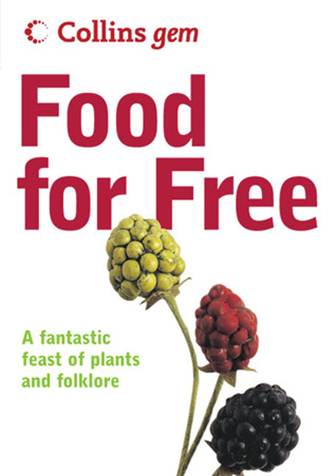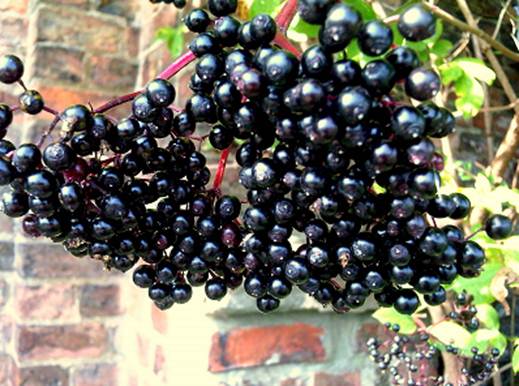This forager’s bible has sold half a million
aopies since it was first published in 1972. Author Richard Mabey reveals why
wild flavours tickle our tastebuds still
It’s mid-autumn and the colours on the
Cumbrian dells are as topsy-turvy as 2011’s weather. Mauve bush-vetch is having
a second flowering among the gold-brushed bracken fronds. White-winged oyter
fungi (‘Whinlatter angels’) sprout from stumps under oak trees in full green
leaf. Hogweed is in lacy flower and burnished seed on the same plant. The
landsape seems bent on serving up the same kind of seasonal surprises as the
new generation of cuisine sauvage chefs are busy assembling on their plates.
I’m up in the lake District for a wild foodie
weekend, based at the Cottage in The Wood, near Keswick. Chef Rupert Willday’s
passion for foraging infuses everything on the tables, even the plate
decorations at breakfast. What he doesn’t offer is the opportunity for feral
gorging. There are no Desperate-Dan-sized bilberry pies or bottomless mushroom
stews. Instead there are spikes and washes of intense flavour, wild grace
notes. At dinner he serves game sausages with a haw hetchup, which somehow
seems earthily deep and lemon-sharp at the same time. He concocts an English
version of Chinese five-spice – crushed seeds of fennel, ramsons, sweet cicely
anf hogweed (uncannily like cardamom), plus herb bennet root (to stand in for
ginger).

Food
for Free (Collins GEM). by Richard Mabey
And there are greens, too, even at this
late season. Sprigs of wayside bush-vetch, and thinning from the abundant
sprouting of wood sorrel in the local forest, tiny acidic wafers on wiry
cocktail stalks. The autumnal fellside landscape has come indoors.
Willday isn’t a lone voice, so to speak, in
the wilderness. Simon Rogan’s phenomenally good L’Enclume, also in the Lake
District, serves up mouthwatering confection such as golden turnip dumplings
with Cheddar cheese, alxanders and rock samphire, and iced clery with chestnut and
English truffle.
L’Enclume and Sat Bains’ eponymous eatery
in the heart of Nottingham were both in 2010’s Good Food Guide list of the top
three UK restaurants – largely on the strength of their imaginative use of
wildings.
Wild dining
The benchmark for this new wave pf wild
fine dining is Rene Redzepi’s Copenhagen restaurant Noma, judged to be the best
in the world. Redzepi uses a mind-stretching battery of wild ingredients,
including birchwood, sea buckthorn berries, spruce shoots and bulrush hearts. His
rise has been symbolic of the foraging renaissance, and it’s hard to find a
serious restaurant these days that doesn’t feature wild food on its menu.
An entire infrastructure of profeesional
pickers has evolved to service the trade – even the supermarket are getting in
on the act, particularly with mushrooms. Wild food has gone mainstream.
How time have changed. O still have a photo
of myself taken when I first began grubbing around for wild foods. I’m sitting
croos-legged on the lawn in a kaftan, looking rather smug, and cradling an
immense and suggestive puffball in may lap.
What this picture reminds me of, 40 years
on, is that back then foraging didn’t feel as if it had anything in common with
high gastronomy, or, for that matter, with lowly hunter-gathering (though of
course it once did). It felt political, hippy and hedge-wise – a poke in the
eye for domesticity as much as domestication.
Its recent rise to fashionableness has
raised all kinds of worrying conundrums, not to mention the irony of smart dining-out
being underpinned be the deeply unsmart business of bramble-scrabbling and
mud-trawling.

One of the best justifications for foraging
has always been that it heightens your awareness of the natural world, and of
the fundamental roots of food. Now, the growing availability of what might be
called ‘convenience wilding’ can look like a shift in the opposite direction –
not so much connecting with the wild as domesticating and distancing it.
Eyebrows have been raised, too, at the
trend for treating honest, natural ingredient in such extravagant ways. Snails
served in moss (“the aim of the persentation is to recreate the habitat of the
snails”) can seem gross – a kind of gastro-porn – to some. Give us a billycan
pf nettles over a camp fire any day, say the traditionalists. Even the growing
popularity of foraged food – formerly viewed as a heartening shift in public
taste – is now viewed suspiciously, as posing a threat to wild flora and fauna.